Arabidopsis thaliana ethylene-responsive element binding protein (AtEBP), an ethylene-inducible, GCC box DNA-binding protein interacts with an ocs element binding protein
- PMID: 9159183
- PMCID: PMC20889
- DOI: 10.1073/pnas.94.11.5961
Arabidopsis thaliana ethylene-responsive element binding protein (AtEBP), an ethylene-inducible, GCC box DNA-binding protein interacts with an ocs element binding protein
Abstract
Ocs elements are a group of promoter sequences required for the expression of both pathogen genes in infected plants and plant defense genes. Genes for ocs element binding factors (OBFs), belonging to a specific class of basic-region leucine zipper (bZIP) transcription factors, have been isolated in a number of plants. Using protein-protein interaction screening with OBF4 we have isolated AtEBP, an Arabidopsis protein that contains a novel DNA-binding domain, the AP2/EREBP domain. One class of proteins that contain this domain are the tobacco ethylene-responsive element binding proteins (EREBPs). The EREBPs bind the GCC box that confers ethylene responsiveness to a number of pathogenesis related (PR) gene promoters. AtEBP expression is inducible by exogenous ethylene in wild-type plants and AtEBP transcripts are increased in the ctr1-1 mutant, where ethylene-regulated pathways are constitutively active. Electrophoretic mobility-shift assay and DNase I footprint analysis revealed that AtEBP can specifically bind to the GCC box. Interestingly, the highest level of AtEBP expression was detected in callus tissue, where ocs elements are very active. Synergistic effects of the GCC box with ocs elements or the related G-box sequence have been previously observed, for example, in the ethylene-induced expression of a PR gene promoter. Our results suggest that cross-coupling between EREBP and bZIP transcription factors occurs and may therefore be important in regulating gene expression during the plant defense response.
Figures

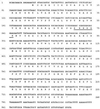
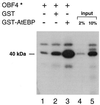

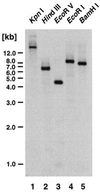
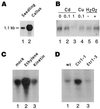
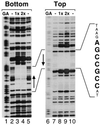
References
Publication types
MeSH terms
Substances
Associated data
- Actions
Grants and funding
LinkOut - more resources
Full Text Sources
Other Literature Sources
Molecular Biology Databases
Research Materials

